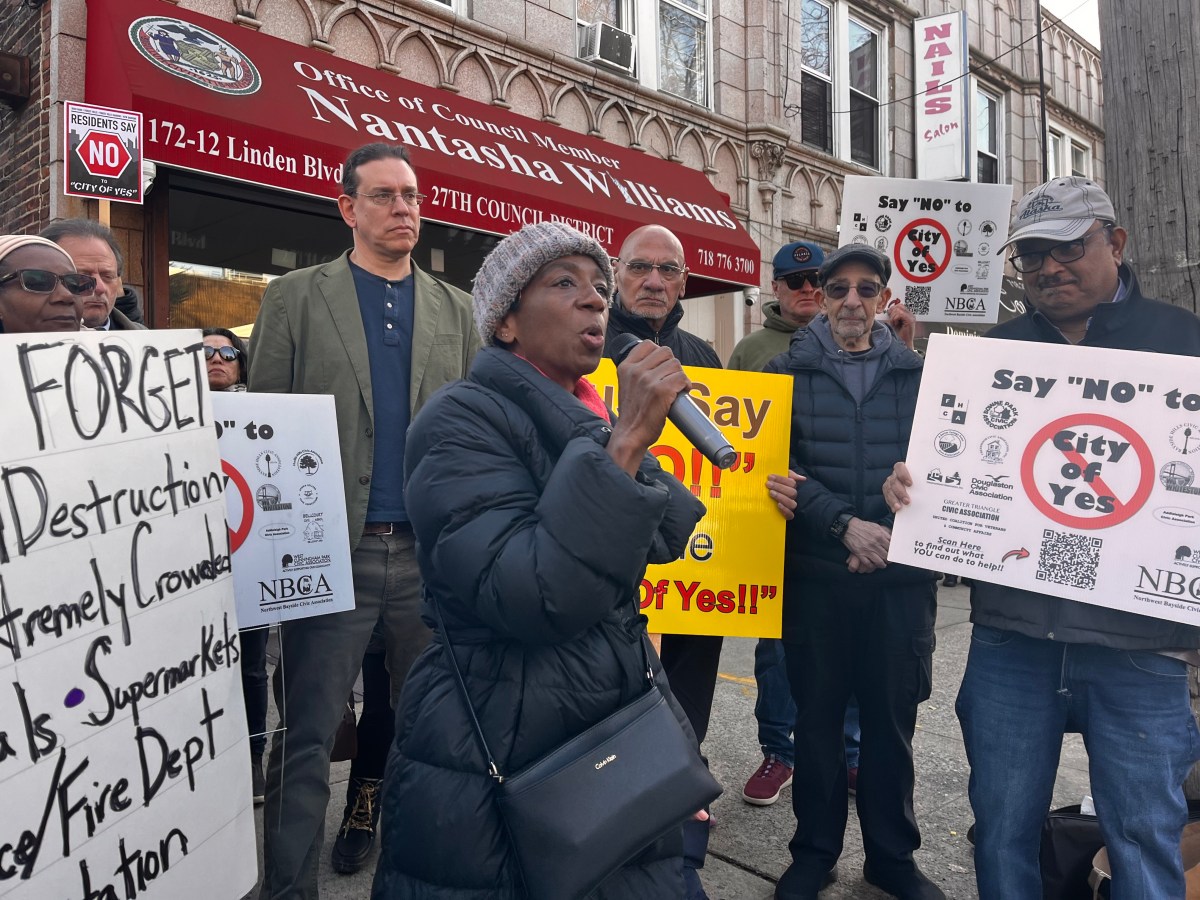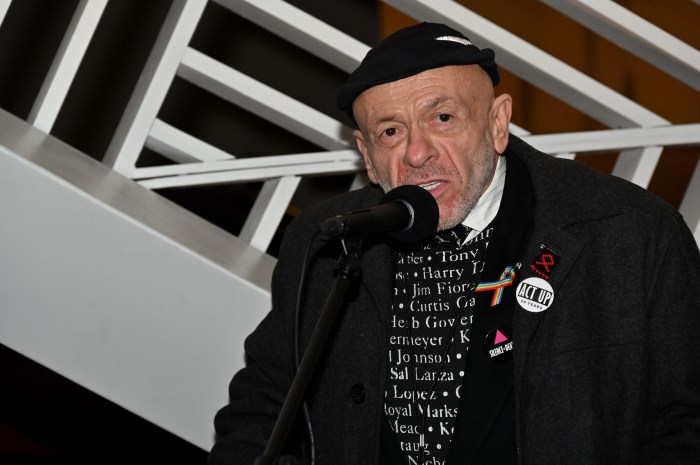
A new exhibition at the Guggenheim gives visitors a connection to the social and political landscapes of a war-torn region that has led to the largest exodus of refugees since World War II.
The Middle Eastern and North African contemporary art exhibition allows viewers to reflect on the phenomenon, which is explained through the personal lens of the artists.
“But a Storm is Blowing from Paradise: Contemporary Art of the Middle East and North Africa’’ opened Thursday. It has large installations such as a couscous sculpture of geometric boxes, dome roofs that resemble a sandstone village of biblical times and a suspended stainless steel frame stringed together with rubber threads.
A watercolor painting offers a satirical depiction of smiling naked women driving zodiac motorboats to mimic immigration patrol vessels that today navigate the turbulent migratory waters of the Mediterranean Sea. A white illuminating whale emerges from the center of the painting.
“This is a huge flashback to the Holocaust … people watching not intervening until many people begin to perish. Don’t we see this happening in Syria and Iraq?,” said exhibition curator Sara Raza. She hopes future generations will view the pieces and “see it as art” rather than geographical borders or defining people by gender, race or religion.
The exhibition pieces, which will become part of the Guggenheim’s permanent collection, is open until Oct. 5.
“It’s a sculpture — a stainless steel frame suspended with rubber threads,” explains artist Nadia Kaabi-Linke, 37, who got the idea for the installation when living with undocumented North African street vendors working in Venice. Called the “Flying Carpets,” the hanging cage “hovers a lightness” that gives both the sensation of being free and within the confines of a cage, she said.
“This is the experience of the undocumented,” Kaabi-Linke said. She watched street hawkers sell their rugs, toys and handbags, who were always ready to run away at the sight of police, she said.
“It teaches me that I too am an immigrant. I have parents who are from Tunis and Kiev. It is part of my skin. I have never been undocumented but you never know it can happen to anyone of us when we want a better life for our families.”
Jordanian artist Ala Younis, an architect, offers a depiction of Baghdad’s famed Al-Shaab Stadium — which took 25 years to complete amid “the many layers” of the Iraqi city’s shifting political power and the Gulf War, she said.
The architectural rendition has miniature figurines of the stadium’s various caretakers. Younis includes letters from local athletes asking the U.S. government to stop using it as a military base so residents can resume sporting events there. The exhibit also shows photographs of the late Saddam Hussein swimming laps in the Tigris River to counter U.S. media reports that he was sick. Another picture shows a swimsuit-clad Hussein looking athletically fit.
“This is the history of Baghdad where we are trying to understand the city’s history by understanding this structure in its good times and bad times,” Younis said. The stadium she said “shaped a big part of my life.”




































